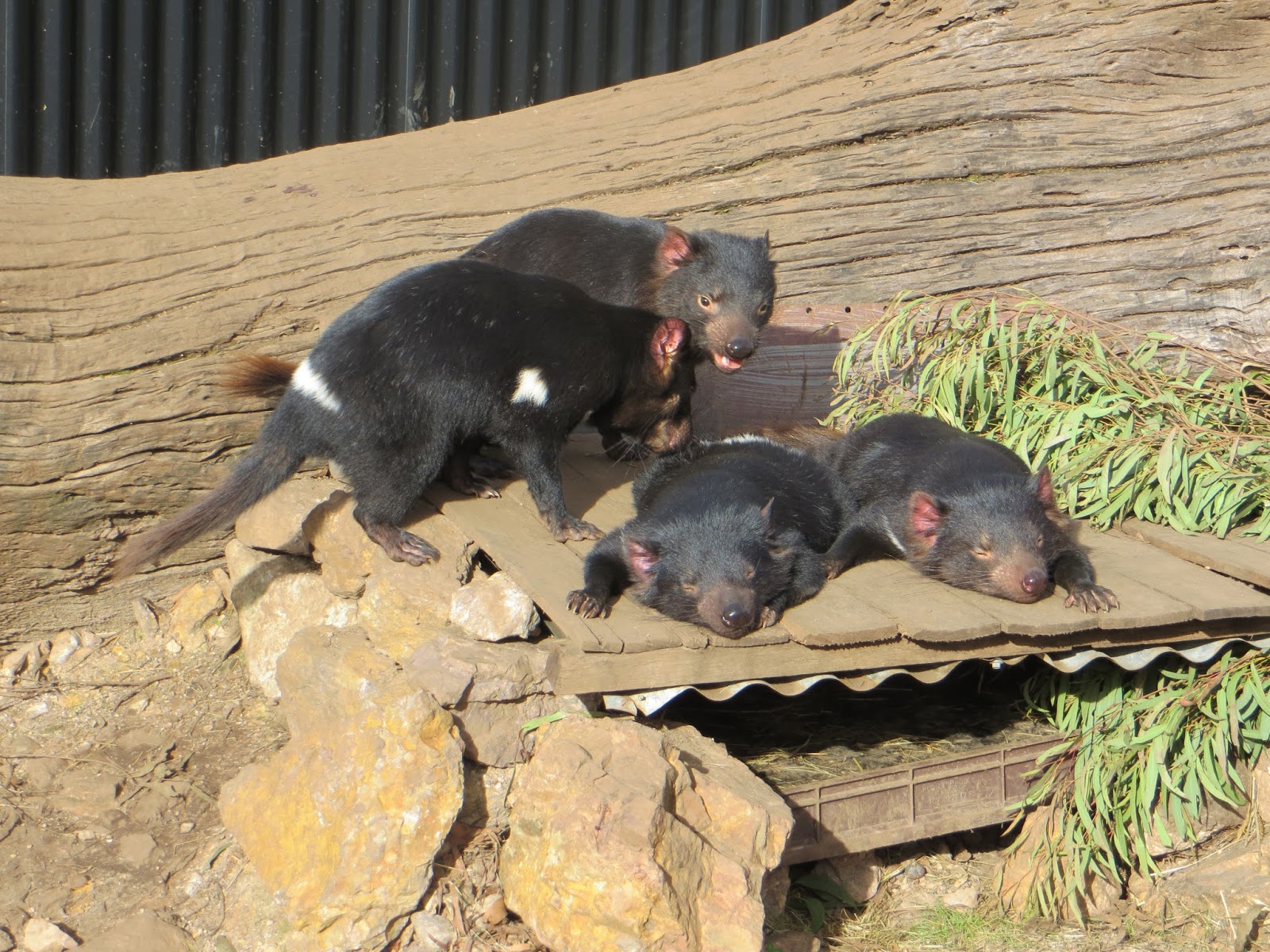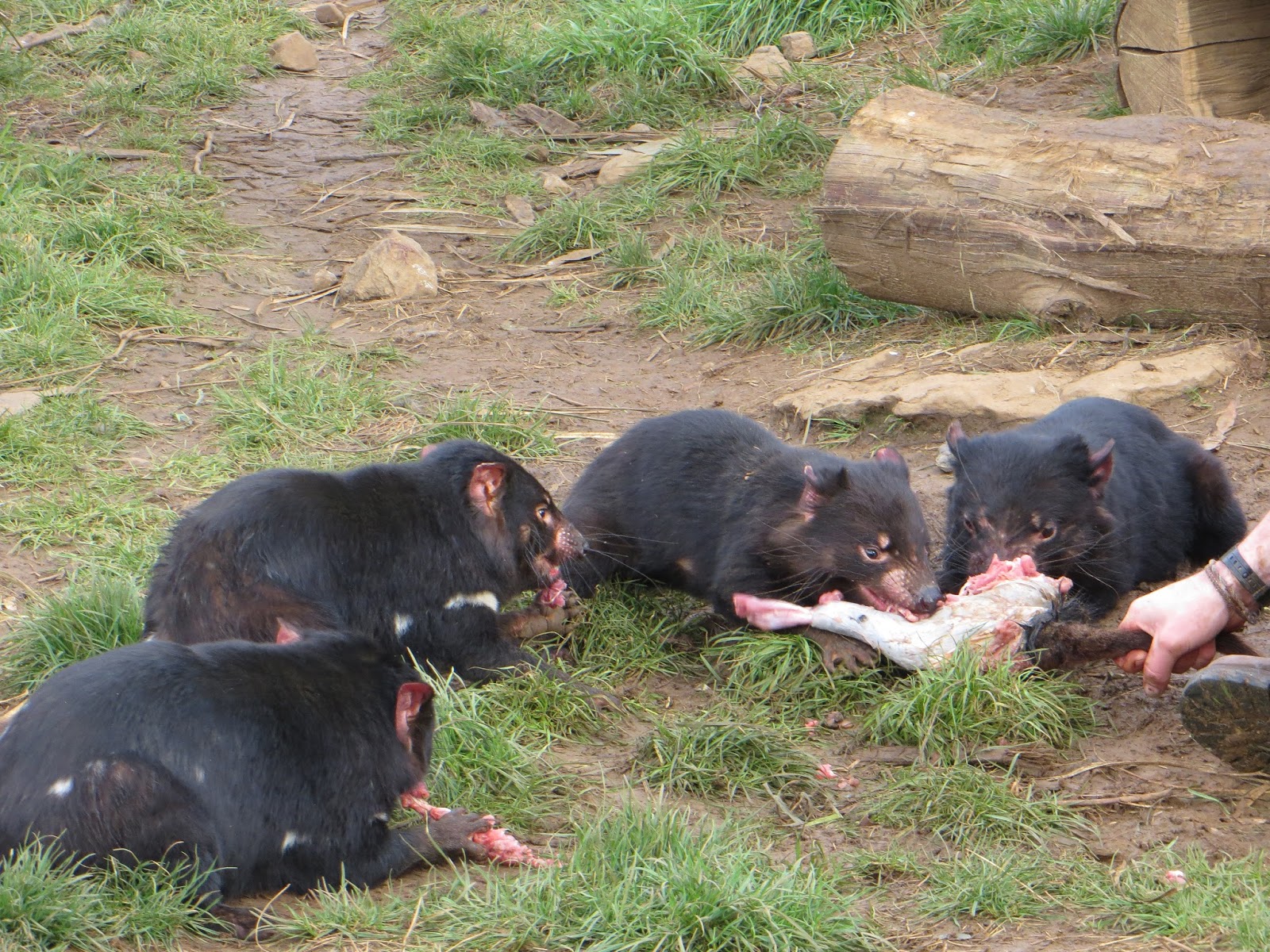We have been busy with our missionary assignments in Tasmania, so are a bit behind on the blog. The speed and dependability of our internet service is reminiscent of dial-up, so downloading photos requires a lengthy time commitment as well as patience. However, we are so thankful for the technology we do have. It was incredible, from a distance of 13,000 miles, to see and hear much of Medium Max's missionary farewell meeting.... thanks to Tyler and Kristin and Steve Jobs. We were also present and able to talk, Face-Time to Face-Time, when he was set apart by his stake president. When Big Max served in Australia 50 years ago, he didn't even get the Christmas and Mother's Day phone calls; rather had to rely on aerograms and snail mail. We are excited for Medium Max to serve in the Mexico City South Mission, and know he will be a great missionary.
We love Deloraine and Tasmania and never cease to be amazed by the beauty and relaxed pace found here. This afternoon as we drove through Mole Creek and Chudleigh, and saw signs pointing to numerous little settlements, we commented that it is like living in Stevensville 50-60 years ago, only the towns were Corvallis, Victor, and Florence. Living in Deloraine would be like living in Hamilton, and a trip to Launceston or Devonport would be similar to a trip to Missoula. Tasmanians are interested in attracting more tourists to visit the island, but have no interest in changing anything. People come here because they like things the way they were. I don't think a freeway or big resort is anywhere in the near or distant future of this pristine state.
 |
The Red Bridge in Campbell Town, on the Heritage Highway route. Convicts constructed many bridges and buildings in Tasmania. |
This impressive Red Bridge dates back to 1838. Convicts laid a million bricks to build it and it still withstands thousands of vehicle every day.
The Tasmania Zone finally meets President and Sister Maxwell in Hobart. (Back, left to right: Elders Hosman, Guilain, Garrett, Fillmore, Maxwell, Urry, Smith, Whitehead, Jennings, Clark, Bellon, Napa. Front, left to right: Elder Sargeant, Sisters Fillmore, Maxwell, McDonald, Elders Smith, Bennalack, Yim-Tay-Cheung, and McDonald.)
After the meetings, McDonalds hosted us to lunch and served yummy chicken and dumplings. Elders Sargeant and Hosman joined us and the Maxwells, because we drove them home from Hobart to Launceston
On our way to Cradle Mountain with the AP's and Zone Leaders, we saw this wombat in the bush.
We sent the missionaries on a hike to an overlook, opting instead for a walk around Dove Lake. It was really cold and windy!
Most of the time, both peaks of Cradle Mountain were shrouded in clouds.
But, for a few brief seconds, the clouds cleared and we had a
view of both peaks.
Trowunna Wildlife Park in Mole Creek was a great place to spend a P. Day. This park is also a devil education and research center, so devils are plentiful.
Snarling and growling doesn't always indicate aggression; rather is how devils play and interact with each other.
The spotted-tailed quoll is another animal unique to Tasmania.
The wombats are short-legged, muscular marsupials, native to Australia. They dig extensive burrows with rodent-like front teeth and powerful claws. They have a tough plate, mostly made of cartilage, on their back side. This makes it difficult for any predator that follows it into its tunnel to bite and injure the animal. Locals tell us that because of this strong plate, you don't want to hit a wombat with your car, and if you do to expect thousands of dollars worth of damage.
This little guy was rescued from his mother's pouch when she met an unfortunate death on the road. The rangers at the wild animal park will care for it until it is old enough to fend for itself.
Tamanian Devils are generally nocturnal, but it was about feeding time, so they were waking up.
The lucky ranger picks up road kill on his way to work each day, puts it in a 5 gallon bucket, then feeds it to the devils at the wild animal park. They fight over the meat, and ultimately consume every scarp, including teeth and fur.
The kangaroos were having a bit of an afternoon nap and weren't at all bothered that we walked among them. This mama has a Joey in her pouch.
Echidnas may look like a porcupine, but their only relative is the platypus, which is also an egg laying mammal. The female lays a single egg, about the size of a jelly bean. When hatched, the baby is is suckled by its mother from mammary glands in the pouch and is carried in the pouch for about 3 months. In colder climates like Tasmania, the Echidna grows fur to keep warm. In warmer climates, is only has quills.....which are very sharp.
These wetlands on the Tamar River reminded us of home. We walked on a long boardwalk to Tamar Island.
People used to live on Tamar Island, and someone stuck this plow in the crotch of the tree and forgot about it. The tree has grown, and now the plow is completely imbedded in it. This reminds me of the story President Hinckley told about the wedge in the tree.
We are always looking for "the road less traveled," and this day on our way home from cleaning the Bond Street flat in Launceston, we drove to Notley Gorge and hiked through the rain forest.
I loved how the sun backlit the moss hanging from this branch.
This Mountain Ash tree stretched 80 - 100 meters skyward.
It rained and rained and rained, and the lazy Meander River wasn't very lazy, as the water spilled over the banks, covering the walking trail, flooding roads and bridges, and leaving huge trees behind as it receded.
Picnic tables were completely submerged. Locals joined us to watch the power and force of the water and confirmed that the river was higher than it had been for 5 - 7 years.
The Launceston City Park has an enclosure filled with monkeys. It was about feeding time, and they were anxiously waiting for dinner.
We watched the monkeys, until the ranger led them into a protected area for the night, luring them with food. It didn't take any encouragement for them to follow.
Another side trip home from Launceston was to Liffey Falls. We wanted to see the change in the flow as a result of the heavy rainfall. Before, people crossed from one side to the other, but certainly not today.
This is one of 4 very large handworked 3D textile art silk panels depicting local events and scenes from Deloraine. The craftsmanship in this work of art is amazing. Tasmanians take a lot of pride in the preserving the history of their communities and sharing that history with visitors. Every small town has something to share.



























No comments:
Post a Comment